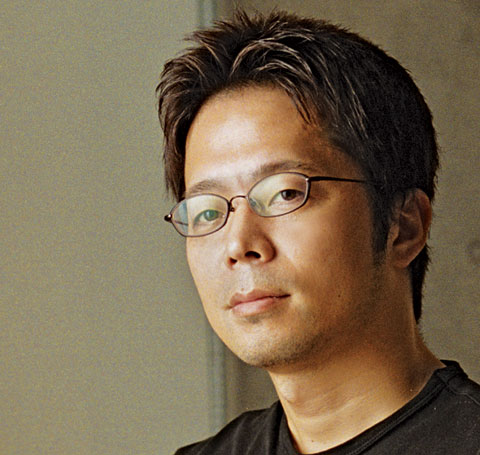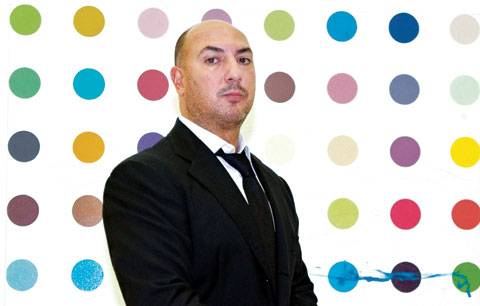I mainly get inspiration from nature and also from the worlds of Japanese comics that I have read in my childhood.
Design Miami/, a global forum for collecting, exhibiting, discussing, and creating design that runs in conjunction with Art Basel in Miami Beach and Switzerland, has named Tokujin Yoshioka its 2007 Designer of the Year, an honor that was bestowed upon Marc Newson in 2006. Born and based in Japan, Tokujin was selected for his exceptional ability to create boundary-extending designs filled with emotion and grace. Tokujin has distinguished himself in the field by transforming everyday materials—glass, plastics, fabrics, paper, and even tissues—into magical objects and spaces. At the same time, he has proved a master of technical innovation, finding new methods of production that are unique to his work.
HL: You’ve been named Designer of the Year. How did you hear about that? What was your reaction?
TY: I am very pleased to be named Designer of the Year. I have been trying to create what has never existed before and what brings us new values. Some people may regard what I have been trying as art. In any case, it is a great honor for me that people around the world have interest in my works. At the same time, I also would like to start new projects.
HL: What pieces can we expect to see at your Retrospective Exhibition?
TY: I will present “Honey-pop,” “Chair that disappears in the rain,” and “Pane Chair.”
HL: The “Honey-pop” chair was a huge hit – can you talk a bit about the piece? Did that inform the direction your design career took?
TY: Yes, I think “Honey-pop” informed the direction of my design career. However, “Honey-pop” is not a new design with new form, but a design that has a completely new structure. I think this work had become a key to open out the future possibilities.
HL: What are some of the new pieces that will be unveiled?
TY: A large-scale installation entitled “Tornado” and a new chair entitled “Rainbow Chair”.
HL: What is it that inspires you to create these unique pieces?
TY: I mainly get inspiration from nature and also from the worlds of Japanese comics that I have read in my childhood. For example, “Honey-pop” got its inspiration from comics: to create an imaginary world in the actual world.
HL: You say that “emotion itself is what completes design.” What kinds of emotions do you look for design to elicit?
TY: I believe that the most important thing for man is not a material but a feeling of an emotion, which has coexisted with man since birth. However, the understanding toward designers has changed and designers have been regarded as an occupation that designs form. For me, the form is just one of the processes and the most important things are what remains of people’s feelings and what kind of emotions remain in people. I think these things complete design.
HL: Who are some of your mentors, and how do they continue to inspire you?
TY: My mentors are Issey Miyake and Shiro Kuramata.
I had been inspired since they had seen a lot of wonderful things of all over the world.
Also, as they are the leading people who had established new values of creating things, I always tried hard in order to meet their expectations.
HL: You’ve done furniture, architecture, interiors, graphics, and packaging. How do they differ? Is there a constant thread that runs through the creation of each? Do you have a favorite?
TY: I do not have any conceptions called “categories” when I design. I always try to create things from experimental and innovative points of view. As I mentioned before, to design the feeling is the most important thing. I wish if I could leave some tracks, that will continue to the future.
HL: Where do you see your work fitting into the global design landscape? Are you part of a movement?
TY: I would like to set the trend or a movement. I have my own thoughts on design and I just continue to design in order to realize it. However, I came to be aware that my design is quite similar to nature and I even feel it is getting closer to “life”.
HL: What do you feel is the impact of Art Basel Miami on the global art community? Have you showcased at Basel in the past?
TY: I cannot imagine the impact of Art Basel on the global art community. This year, I have presented a new chair entitled “Kimono Chair” as one of Vitra Edition pieces.
HL: What about collaboration? What is the atmosphere in your office like? How many people do you have working with you?
TY: At the office, there are eight people, including me. Everyone always works hard.





















